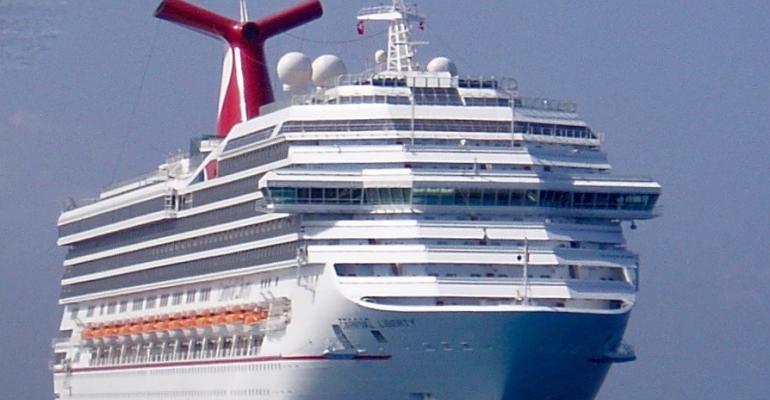The NTSB also found the need for more crew training in the use and limitations of fixed water-based local firefighting systems in machinery spaces and recommended developing and/or improving procedures to manage and account for everyone aboard in the event of a mass evacuation in port.
The crew used the ship's Hi-FOG water mist and carbon dioxide firefighting systems to put out the blaze, which was confined to diesel generator 4 in the aft engine compartment. No one was injured, nor was any environmental damage reported. Fire damage to Carnival Liberty was estimated at $1.725m.
Numerous alarms notified engineers and the bridge, and the engine compartment was immediately closed and the HI-FOG system manually activated. (It had been put into manual mode due to hot work taking place near diesel generator 1 in the forward engine compartment.)
However, the investigation found that while the 'total flooding' buttons were activated for the forward and aft engine rooms, according to the HI-FOG manual specific to Carnival Liberty the system was designed for total flooding in one engine space at a time, not both. Total flooding could be activated only from the engine control room and not locally or from the bridge.
The NTSB report called it 'significant' that crew members were unaware that the HI-FOG system was incapable of delivering total flooding to both engine rooms simultaneously, and that they then had to use the CO2 system to extinguish the fire.
'Furthermore, they did not consider, nor did any checklist specify, returning the HI-FOG system to automatic from manual mode immediately after confirmation of a fire. According to the system manufacturer, returning the HI-FOG system to automatic mode would have activated the HI-FOG section valves only in affected areas (based on smoke- and flame-detector activations).
'The NTSB concludes that comprehensive crew training and familiarity regarding the use and limitations of fixed water-based local application systems in machinery spaces are crucial to safe operations.'
Fifteen minutes after the first fire alarm at 11:33 a.m., the captain sounded the ship's general emergency system. According to the NTSB report, while he felt good confidence the fire was under control, he was concerned about smoke and the risk it posed to passengers, so he ordered an evacuation to the dock via the two gangways located on Deck 0.
By 12:36 p.m., the temperatures at the watertight doors were low enough to indicate the fire was out. At 4:14 p.m. a fire squad entered the area and confirmed that, and the engineering crew began work to restore ventilation and air conditioning in preparation for passengers' later return to the ship.
When the evacuation was ordered, many passengers were already ashore visiting Charlotte Amalie. About 541 remained on board, according to the ship's A-Pass system.
In Carnival Liberty's emergency plan, A-Pass was to be used to account for passengers and crew during an evacuation to the dock. However, many passengers did not scan out because they didn't have their identification cards with them and efforts to manually log them off created a bottleneck at the gangways. This resulted in complications accounting for everyone. People had to line up outside in the heat for roll call. Some went back on board, further hampering a proper accounting.
Crew and shoreside crisis management teams arranged for all passengers to be accommodated at local hotels until further notice. At about 8:30 p.m., passengers were allowed to return to the ship and just before midnight, the crew were able to determine that everyone on the manifest was accounted for.
However, because of the fire damage, Carnival Cruise Line canceled the remainder of the cruise and arranged for the passengers’ return home.
The NTSB report noted that 'in evacuating a partial passenger-count onto a dock in port, the ship’s command and crew had to adapt to an unfamiliar situation. They had not trained for such an event; further, no specific applicable company policy or procedures were in place about it at the time.
'Cruise ship crew training and drills commonly focus on a known number of passengers aboard because the assumption is that the ship is at sea,' the NTSB report continued. 'In addition, lack of space on the dock, environmental conditions, crowd control and wait time further hampered the evacuation process. Thus, during the emergency, the crew were unable to accurately account for all persons.'
The safety agency recommended that Carnival develop and/or improve procedures to manage and account for everyone aboard in the event of a mass evacuation while in port.
The NTSB also recommended that Cruise Lines International Association inform its members about the circumstances of the Carnival Liberty accident, including the need to plan for accounting for all persons aboard should there be a mass evacuation in port.
The full report is here.
Copyright © 2024. All rights reserved. Seatrade, a trading name of Informa Markets (UK) Limited. Add Seatrade Cruise News to your Google News feed.


